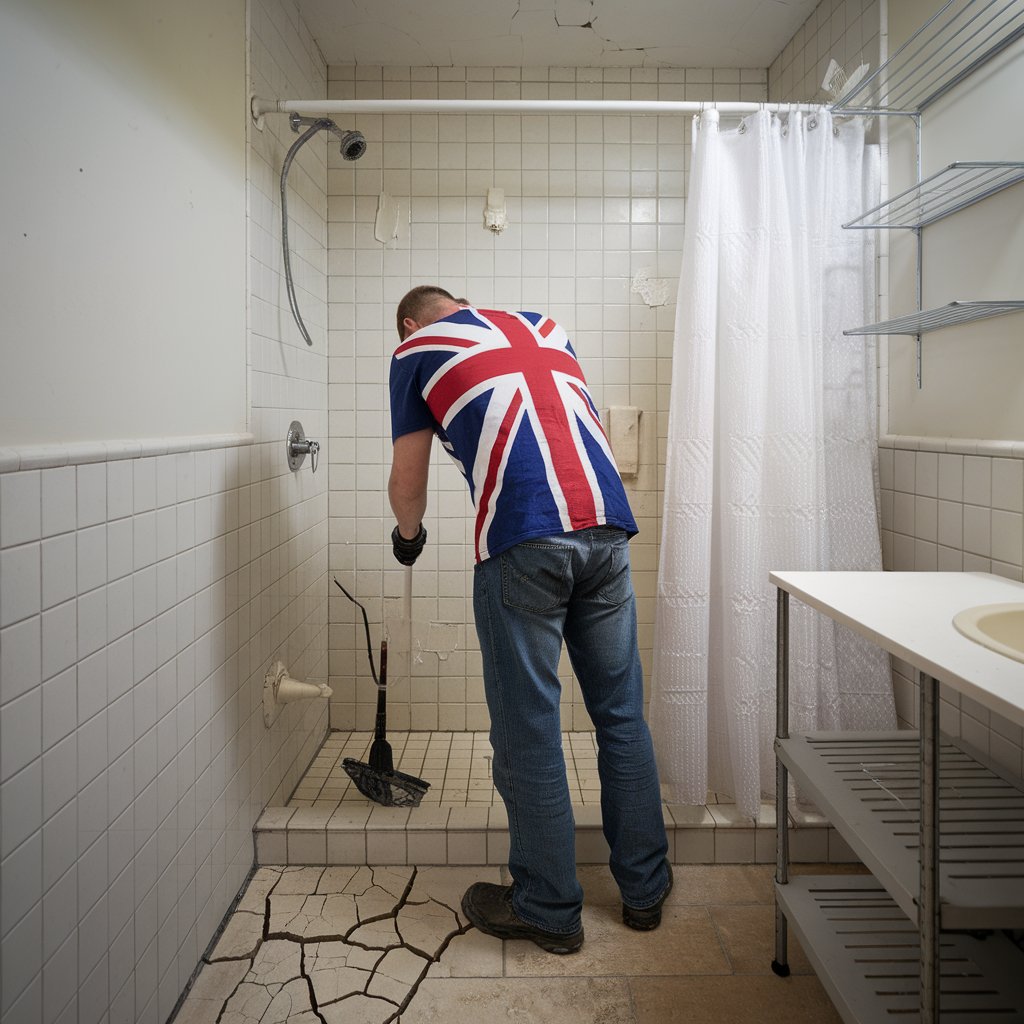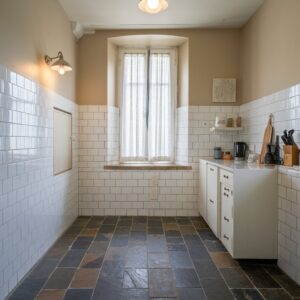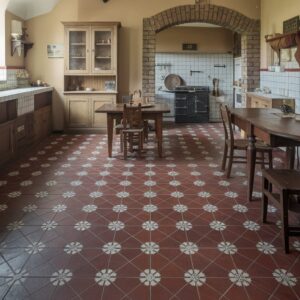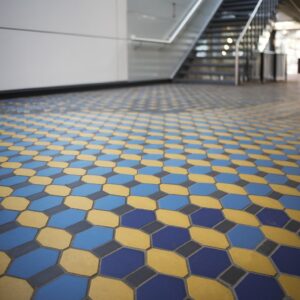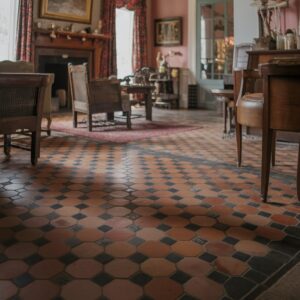Cracks in bathroom tiles can seem like a minor issue, but they often lead to bigger problems if not properly addressed. From water leaks that compromise the underlayment to unsightly gaps that reduce property value, keeping tiles crack-free is essential. Whether you need to know how to fix a cracked bathroom tile or simply want to understand why your bathroom tiles are cracking, a little knowledge goes a long way in maintaining a pristine and safe bathroom. Abel Tiler London, known throughout the UK for its professional tile repair service and team of experienced tiling contractors London, highlights each step of filling cracks in bathroom tiles and preventing them from resurfacing. This comprehensive guide covers everything from dealing with small hairline cracks to removing badly damaged tiles and installing new ones.
Why Are My Bathroom Tiles Cracking?
Cracks in bathroom tiles can arise for several reasons. Sometimes it’s due to shifting subfloors or simple wear and tear over time, especially in busy London homes with constant foot traffic. Temperature swings and excess moisture seepage may also cause hairline fractures. In older properties, the settling of building foundations can produce stress points that eventually cause fractures in ceramic or porcelain tiles. Understanding these underlying problems is important because even the best patch job might fail if the cause isn’t addressed. By learning how to fix cracked tiles in bathroom settings correctly, you not only restore the look of the shower or floor but also prevent tile cracking from recurring.
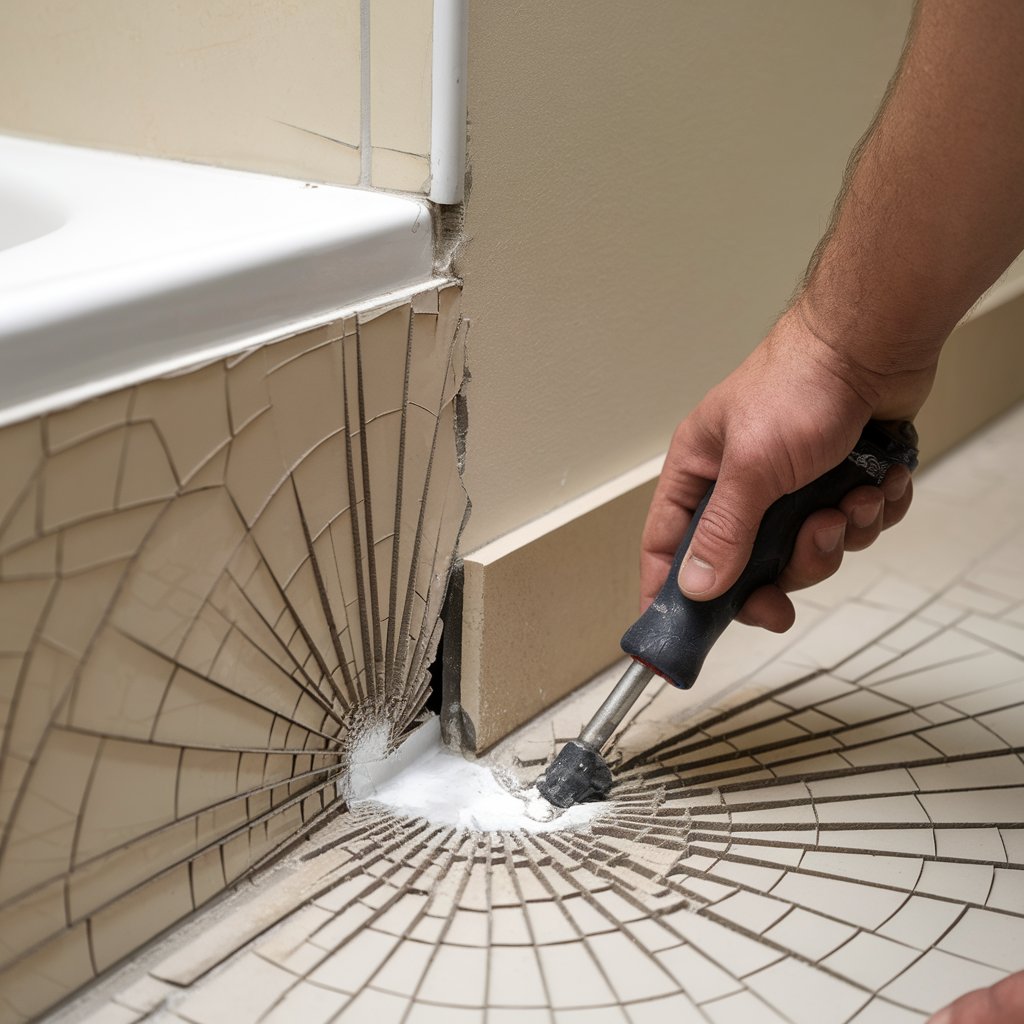
Tools and Materials You May Need
Proper equipment helps you avoid further damage:
- Tile adhesive or epoxy filler
- Grout for resealing joints
- Replacement tiles if breakage is severe
- Tile cutter or specialised drills (for removing old tiles)
- Masking tape for tile drilling to protect surfaces
- Safety gear such as goggles and gloves
- Trowel or putty knife for applying new adhesive
Abel Tiler London always recommends sourcing high-quality products to ensure the fix is long-lasting, especially when working in high-moisture environments.
Dealing with Minor or Hairline Cracks
Learning how to fix bathroom tile crack issues on a smaller scale can save you time and money. Hairline fractures often arise where the tile has minor stress, but it’s not structurally compromised. Following a proper shower tile installation guide ensures that repaired or replaced tiles are fitted correctly, preventing future cracks and water damage. Begin by cleaning the cracked area with a gentle cleanser and letting it dry. Next, use a specialised ceramic tile repair guide product like a clear epoxy or ceramic filler to seal the gap. The filler seeps into the crack, preventing further moisture infiltration. Once it’s fully cured, lightly sand the surface and wipe away any dust. This process helps fix hairline cracks in tiles without requiring a full replacement, preserving your bathroom’s appearance while extending its functional life.
How to Fill Cracks in Bathroom Tiles Permanently
For slightly larger cracks or chips, you may need to apply new adhesive or a high-quality epoxy designed for tile fitting. Clean the crack thoroughly, then fill it with the repair compound using a putty knife or a similar tool. Smooth out any excess and allow the area to dry according to the manufacturer’s instructions. Afterwards, use fine sandpaper to achieve a seamless surface. Sealing the repaired spot with a matching or clear sealant is crucial to protect it from further water damage. A professional tile repair service may also colour-match the repair material to the original tile, making the fix virtually invisible.
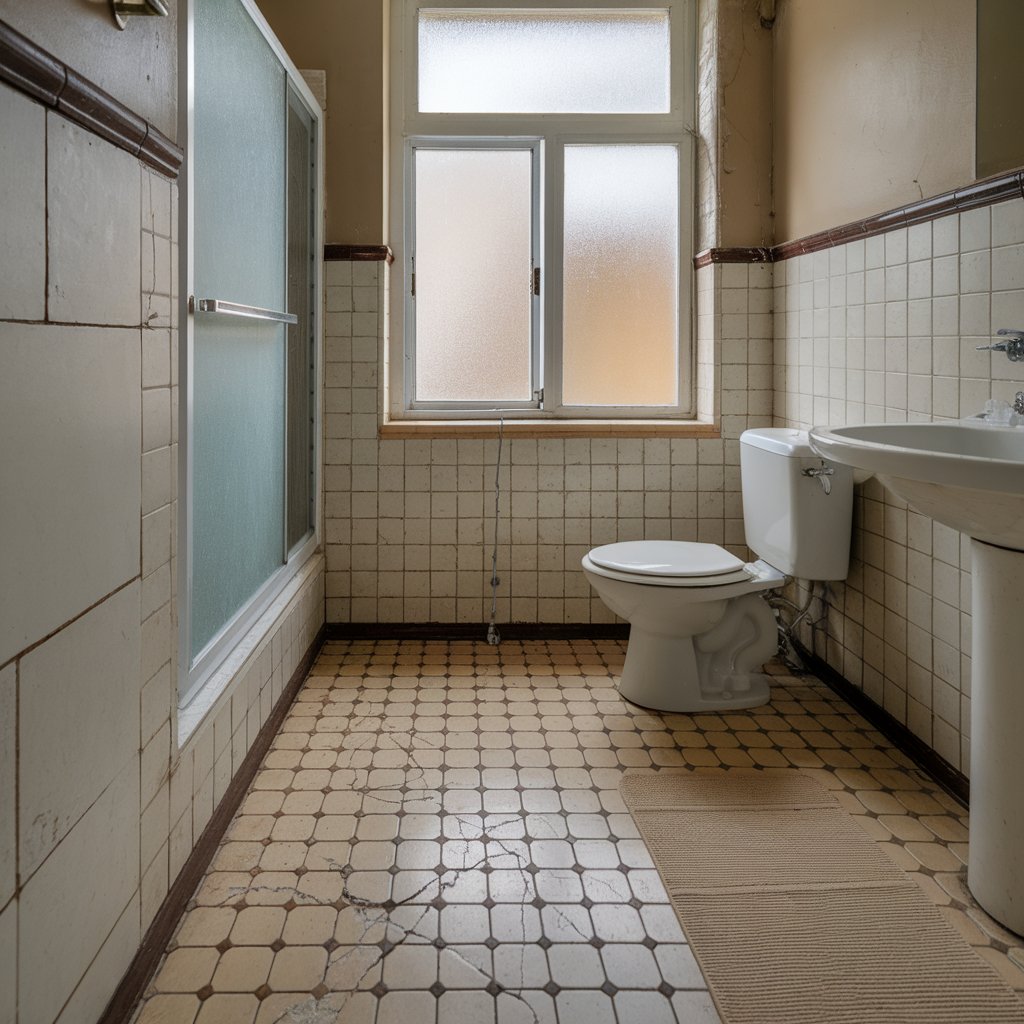
How to Fix Cracked Grout in Bathroom Tiles
Cracked or missing grout can quickly escalate into larger problems if water sneaks beneath the tile. Start by removing the damaged sections of grout with a grout saw or a multi-tool fitted with the right attachment. Clean the exposed edges and allow them to dry. Mix new grout according to instructions and spread it into the grooves, wiping away any surplus with a damp sponge. The surface of the tiles must be free of residue before the grout sets. Once it fully cures, apply a sealant to enhance water resistance. Proper grouting and sealing tiles will not only prolong tile life but also maintain the overall look of the bathroom.
How to Repair a Cracked Bathroom Tile by Replacing It
When cracks are too large or too numerous for a patch repair, it becomes necessary to replace the tile. Knowing how to replace cracked bathroom floor tile or wall tile involves careful removal of the damaged piece. Protect the surrounding area with masking tape for tile drilling, which minimises accidental scratches. Sometimes you may need to drill holes in the tile or break it into sections to remove it safely. Pry out the debris, clean the exposed substrate, and then apply a thin layer of tile adhesive. Firmly press the new tile into place and use tile spacers to maintain even spacing. Once the adhesive sets, re-grout the joints and allow everything to cure before using the shower or floor.
Safety Tips for Fixing Broken Tiles
Tile repair can be hazardous if you’re not prepared. Sharp fragments can easily cause cuts, and dust can irritate eyes or lungs. Always wear goggles, gloves, and a dust mask. Take care with tools like tile cutters or electric drills. If using any power tools, a stable footing is essential, especially on potentially wet bathroom floors. Working in pairs or hiring a professional tile repair service, like Abel Tiler London, reduces the risk of injury and ensures a quality finish. Following tile fitting safety tips protects both you and your home from unnecessary harm.
Tips to Prevent Tile Cracking in the Future
A vital part of knowing how to fix cracked tiles in bathroom areas is understanding how to avoid recurrence. If your subfloor is unstable, address it before installing or repairing tiles. In showers, ensure that waterproof backer boards or membranes are correctly installed. Routine inspection of grout lines also helps identify potential weak spots early on. Sealing shower tile cracks promptly is crucial in preventing water seepage that can destabilise the tile bed. Even simple measures like using a bath mat or adjusting the floor can reduce strain on tiles, helping them last longer. Regular maintenance and immediate repairs go a long way in keeping your bathroom pristine and functional.
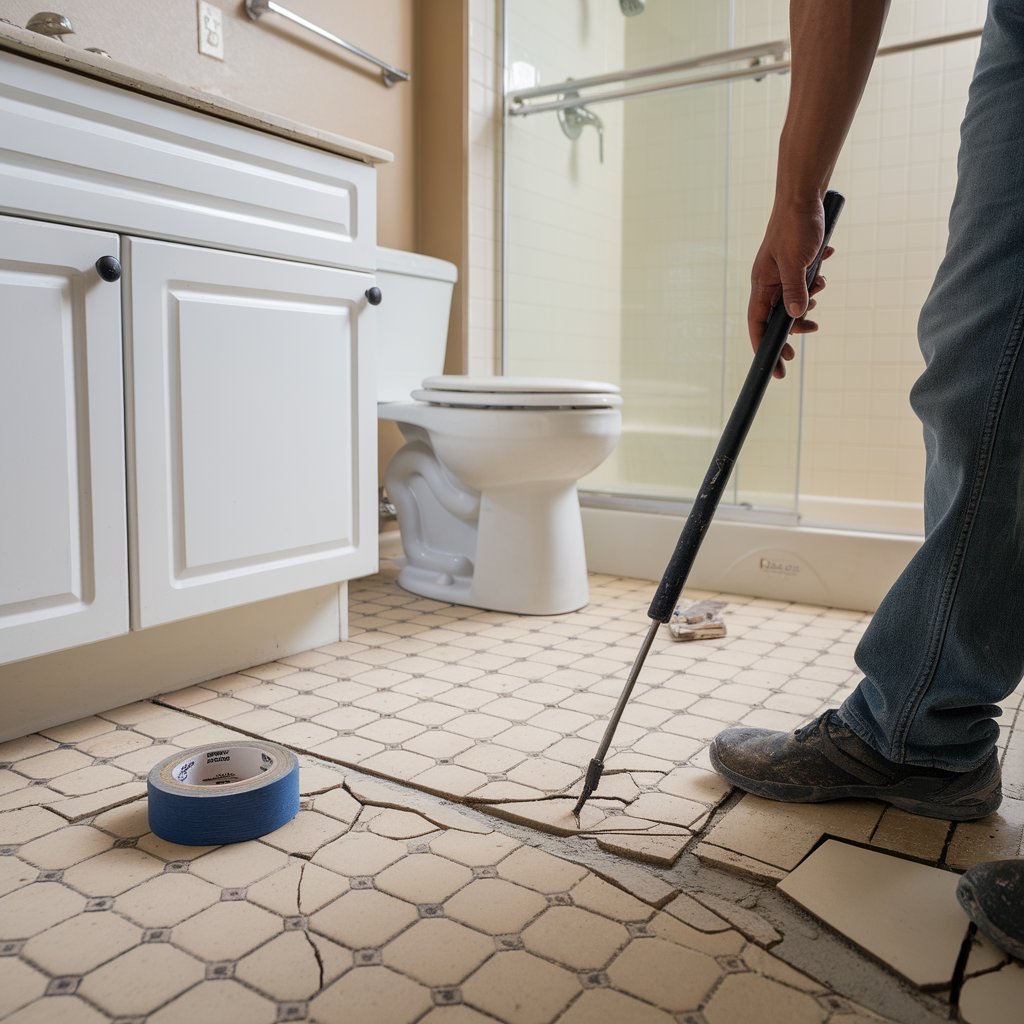
When to Call a Professional Tile Repair Service
DIY repairs work well for minor issues, but certain cracks signal deeper problems that may require professional input. A consistent pattern of tile cracking across a floor often indicates subfloor or foundation issues. Extensive water damage or repeated repairs that fail to hold might also warrant a more thorough inspection. Professional services, like Abel Tiler London, can diagnose core problems, remove cracked tile safely, and carry out a comprehensive repair. Skilled tilers have access to specialised tools and know the best materials for each scenario, ensuring an enduring result. Prompt expert intervention not only saves money but also preserves the aesthetic and structural integrity of your bathroom.
Conclusion
Filling cracks in bathroom tiles encompasses more than just applying fillers or new grout. Understanding why fractures occur, selecting the right repair method, and practising proper maintenance all contribute to preserving tile longevity. Whether you decide to fix hairline cracks or need to replace whole tiles, a little foresight can spare you costly renovations in the future. Abel Tiler London offers practical expertise to help homeowners handle everything from fixing a cracked bathroom tile to removing and replacing heavily damaged pieces. By investing in preventative measures and timely repairs, you’ll keep your bathroom looking fresh for years to come.

